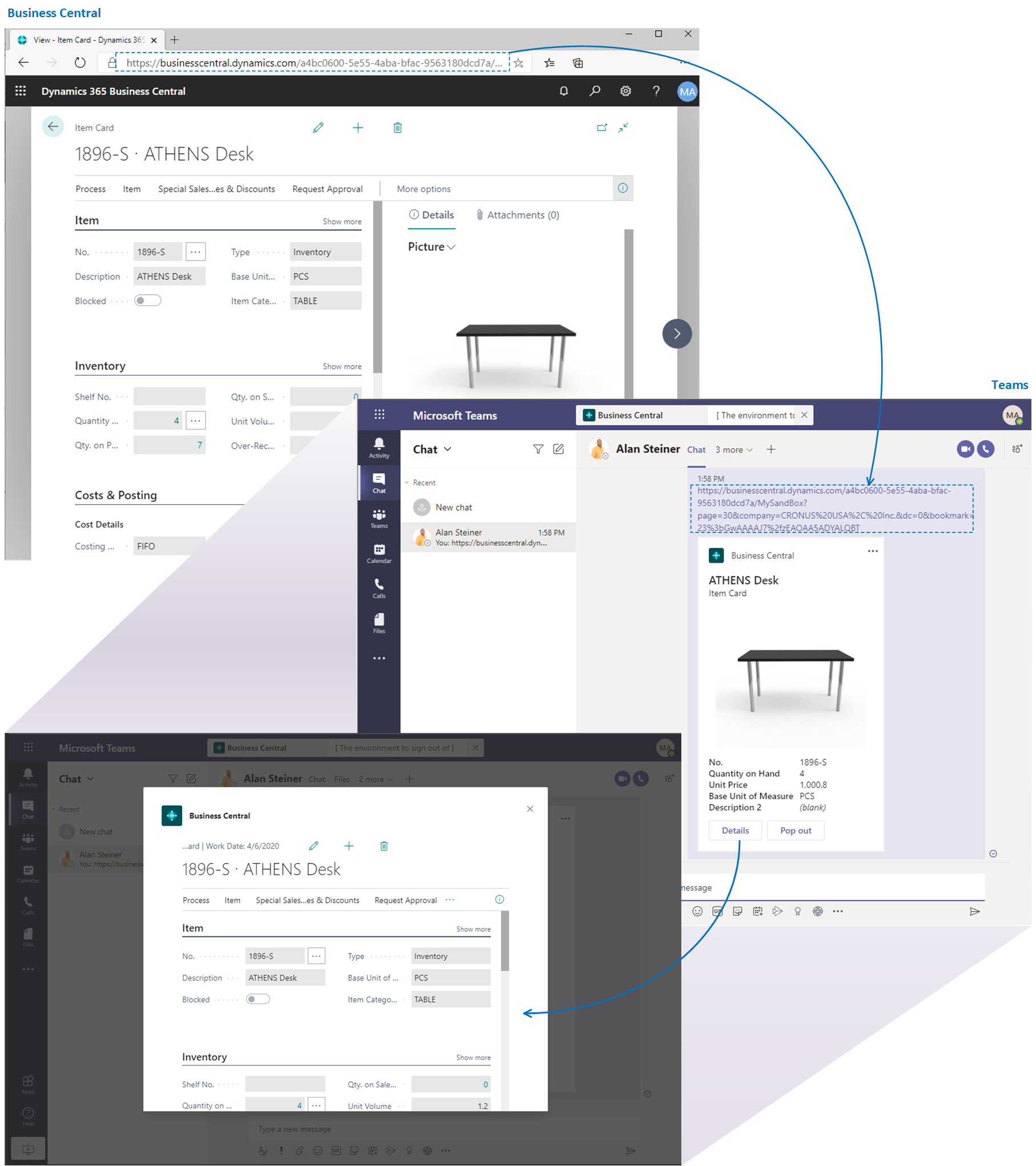Working with Business Central Data in Microsoft Teams
APPLIES TO: Business Central online
Business Central offers an app that connects Microsoft Teams to your business data in Business Central, so you can quickly share details across team members and respond faster to inquiries. In this article, you'll learn how to use the app to share Business Central data with coworkers in a Teams conversation.
Overview
The Business Central app lets you:
- Copy a link to any Business Central record and paste it into a Teams conversation to share with your coworkers. The app will then expand the link into a compact, interactive card that displays information about the record.
- Once in the conversation, you and coworkers can view more details about the record, edit data, and take action—without leaving Teams.
Prerequisites
- You have access to Microsoft Teams.
- You've installed the Business Central app in Teams. For more information, see Install the Business Central App for Microsoft Teams
Note
All participants in a Teams conversation will be able to view cards for Business Central records that you submit to the conversation. But to view more details about records, by using the Details or Pop out buttons on a card, they'll need access to Business Central. For more information, see Managing Microsoft Teams Integration.
Include a Business Central card in a Teams conversation
Sign in to Business Central using your browser.
Open the record that you want to share.
The app is designed to display card type pages from Business Central. So open a page that displays a single record, like an item, customer, or sales order. You can't use it for role centers or pages that display several records in a list.
Copy the entire URL from the browser's address bar.

Go to Teams and start a conversation, which can be chat with a person, group of persons, or a team channel.
Paste the URL in the message box where you compose a message.

The first time you paste a link into a conversation, you'll be asked to sign in to Business Central and give consent for the app to retrieve data. Just follow the on-screen instructions.
Note
You'll only have to do this step once.
Wait a moment while a card is generated in the message box.
When the card appears, review the contents of the card carefully for any sensitive information before sending the message. This step is important because once you send the message, everyone in the conversation can see the card.
If the card looks good, select Send to submit it to the conversation.
Tip
After the card appears, and before you select Send, you can delete the pasted URL if you like.
To view more details or make changes to the record shown in the card, select Details. For more information, see the next section.
View card details
Once a card's been sent to a conversation, all participants with the proper permissions can select Details to open a window that displays more information about the record—and possibly make changes to the record. It doesn't matter if you're the one sending the card or the one receiving the card. The Details feature is especially useful to recipients, because it quickly provides them with concise, targeted information about the record, as opposed to having to scan the full record.
The details window is similar to what you'd see in Business Central the record. But it's slightly trimmed for Teams. When you're finished viewing and making changes, close the window to return to the Teams conversation.
Here are a couple things to keep in mind when working with the card details:
- To open the card details, users must have permission on the page and its data in Business Central.
- Cards in Teams chats aren't automatically updated to changes. Any changes you save to a record in the details window are saved in Business Central. But the card in Teams won't show the changes in the conversion, until you paste the link again.
To learn more about working with cards and card details, see Teams FAQ.
See Also
Business Central and Microsoft Teams Integration Overview
Install the Business Central App for Microsoft Teams
Teams FAQ
Troubleshooting Teams
Developing for Teams Integration
Start a free trial!
Note
Can you tell us about your documentation language preferences? Take a short survey.
The survey will take about seven minutes. No personal data is collected (privacy statement).
